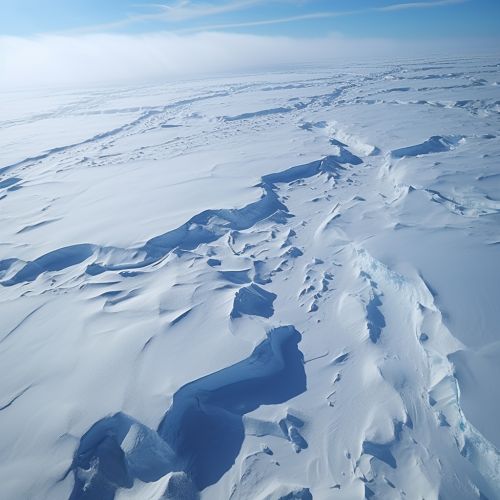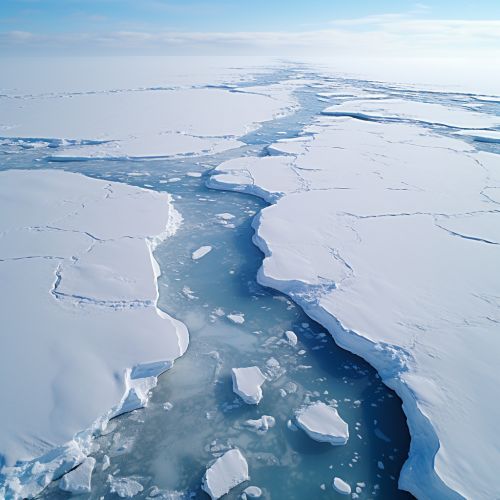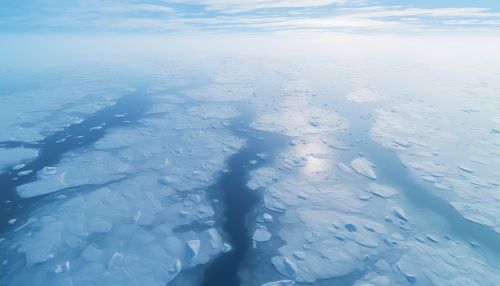Ice sheet dynamics
Introduction
Ice sheet dynamics involve the motion within large bodies of ice, such as those currently on Greenland and Antarctica. Ice motion is dominated by the movement of glaciers, systems of interconnected streams of ice that can flow uphill due to the pull of gravity, and the internal deformation of the ice itself.
Formation of Ice Sheets
Ice sheets form through the accumulation of snow. Over thousands of years, layers of snow compact under their own weight and transform into ice. This process, known as firnification, involves the metamorphosis of fluffy, fresh snow into dense, old ice. The transformation occurs as the snow is buried under more snow and undergoes changes caused by pressure and temperature variations.


Structure of Ice Sheets
Ice sheets are not solid slabs of ice, but are instead composed of layers of ice with different physical properties. The top layer, known as the firn, is a porous mixture of snow and air. Below the firn is the "transition zone," where the pores in the ice close off and the ice becomes denser. The deepest layer is the "deep ice," where the ice is under high pressure and can flow like a fluid.
Movement of Ice Sheets
The movement of ice sheets is a complex process that involves both the sliding of ice over the ground and the deformation of the ice itself. The rate of ice movement is influenced by several factors, including the temperature and pressure of the ice, the roughness of the bedrock beneath the ice, and the amount of water at the base of the ice sheet.
Factors Influencing Ice Sheet Dynamics
Several factors influence the dynamics of ice sheets, including climate, geothermal heat, and the properties of the ice itself. Changes in any of these factors can cause the ice sheet to grow or shrink, which can in turn have significant effects on global sea levels.
Climate
The climate plays a crucial role in ice sheet dynamics. Warmer temperatures can cause the ice to melt at its surface, leading to a decrease in the size of the ice sheet. Conversely, cooler temperatures can lead to an increase in the size of the ice sheet as more snow accumulates and is transformed into ice.
Geothermal Heat
Geothermal heat from the Earth's interior can also influence ice sheet dynamics. This heat can melt the base of the ice sheet, causing it to slide more easily over the bedrock. This process, known as basal sliding, can significantly increase the rate of ice movement.
Properties of Ice
The properties of the ice itself, such as its temperature, density, and crystal structure, can also influence the dynamics of ice sheets. For example, warmer ice is softer and flows more easily than colder ice.
Impact of Ice Sheet Dynamics
The dynamics of ice sheets have a significant impact on global sea levels. When ice sheets grow, they draw water from the oceans and cause sea levels to fall. When they shrink, they add water to the oceans and cause sea levels to rise. Ice sheet dynamics also have a significant impact on the Earth's climate system.


Future of Ice Sheet Dynamics
With ongoing climate change, the dynamics of ice sheets are expected to change significantly in the future. Increased temperatures are expected to lead to increased melting of ice sheets, which could contribute to rising sea levels and other changes in the Earth's climate system.
